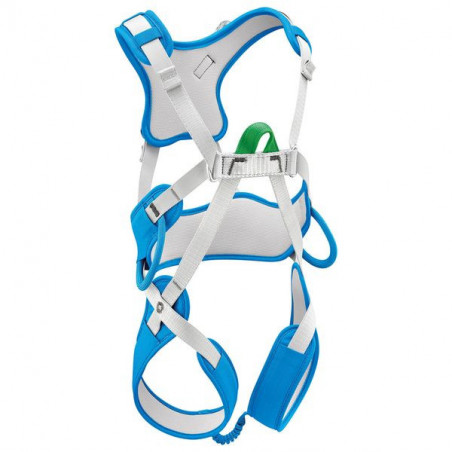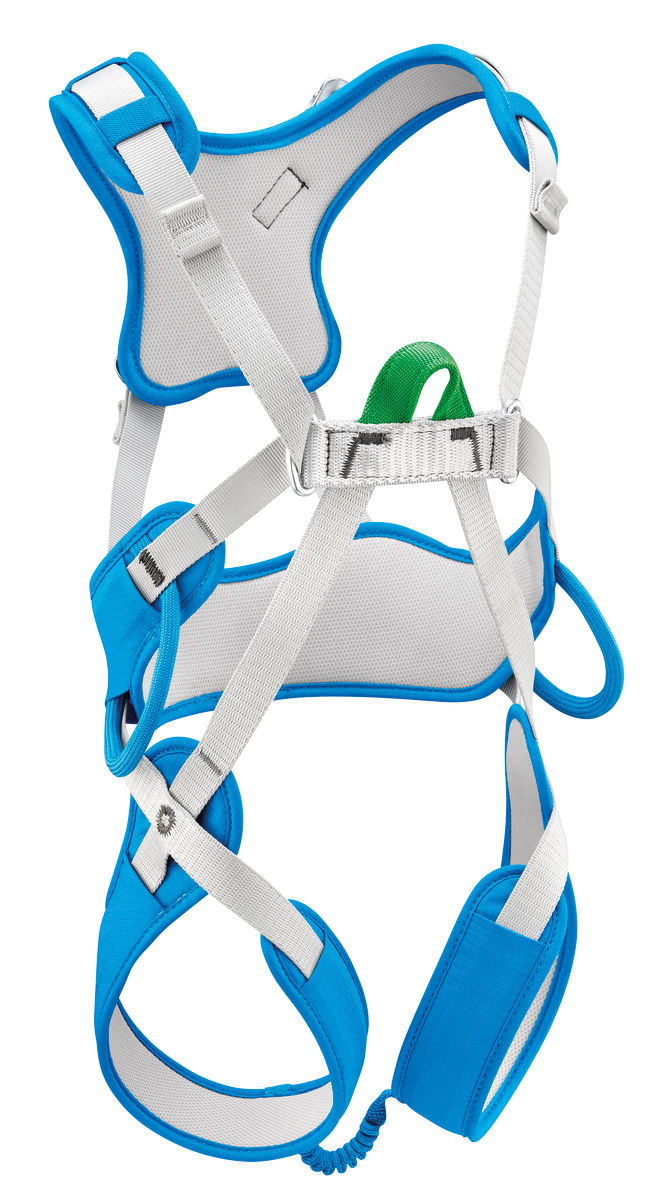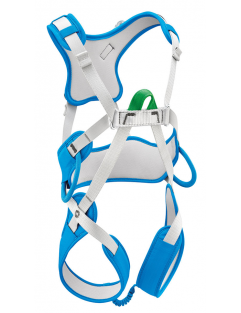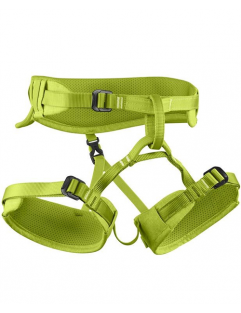Active filters
kids-harnesses
Petzl - Body - Orange - Kid's Shoulder Strapskids-harnesses
Petzl - Ouistiti - Methyl Blue - Kid's Full-Body Climbing...kids-harnesses
Edelrid - Finn III - Kid's Climbing Harness
Kids Harnesses
Kid's Harnesses
The climbing harness is one of the essentials when you look at buying gear for climbing. It adds the necessary safety to your climb for any type of climbing..........sports, indoor, alpine or via ferrata.
One big difference in harnesses is the weight of the product and also the comfort. Some are more adjustable than others and some can carry more gear than others. So don't just buy a harness because of the price but rather really look in to what your needs are and what you plan to do with it.
A kids harness generally shares many features with that of an adult, the only difference is that they are build to accommodate a child’s physique.
Young children, usually 5 years and under, have a relatively high centre of gravity (larger head–to–torso ratio) and should be equipped with a full–body harness. This type of harness is considered a type B harness and is designed for weights up to 40Kg (88 lbs.). A sit harness is recommended once the kid's centre of gravity lowers.

How to Fit and Test a Climbing Harness
Fit:
- Loosen the straps for leg loops and waist loop.
- Step into the harness. Make sure none of the leg/belay loops are twisted or crossing. The belay loop should face the front of the harness.
- Pull the waist belt just above your hip (belly button height) to ensure that you will not accidentally slip out of the harness in the event you fall upside down.
- Adjust the leg loops, if possible. Some harnesses do not have adjustable leg loops and use a piece of elastic to allow the leg loop to stretch.
- The placement of leg loops is not as important as the placement of the waist belt; it is based more on comfort.
- Tighter leg loops give the climber more comfortable when hanging freely, although range of movement can be restricted. On the other hand,, loos leg loops provide more mobility but are not as comfortable to dead–hang in. In any case the harness is safe, so everyone must make the personal call on comfort.
- Finally, make sure the buckles on each loop are doubled back. You are now ready to test your harness.
Test:
- A harness can only be tested when hanging in it. When the harness is weighted, it should feel relatively comfortable and be easy to sit upright (like a chair).
- There shouldn't be any points of pressure where the there's a feeling of the harness digging in the skin.
- The waist belt should feel comfortable and not move around too much.You can also test for shifting by trying to pull the waist belt down over the hips. You should not be able to.
The choices are endless and difficult today so contact our Customer Service or send us a mail to help you choose the right product for your needs.
Shop online.........more time to climb.
Casper's Supports Your Summit














